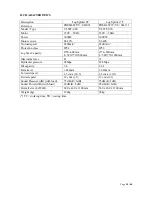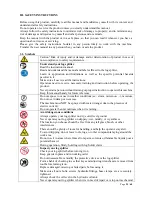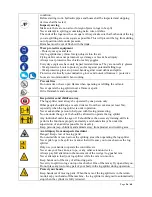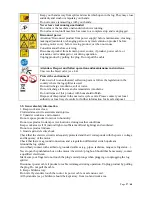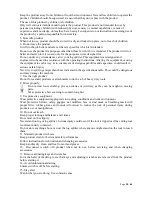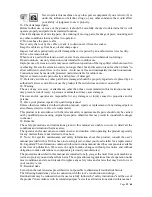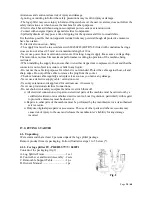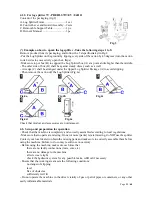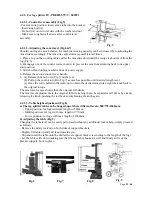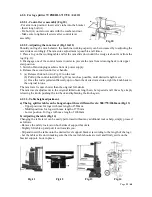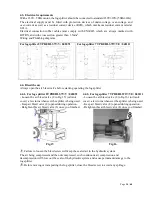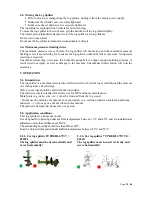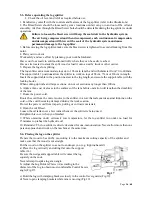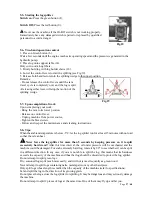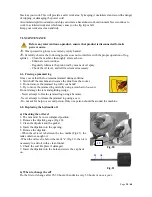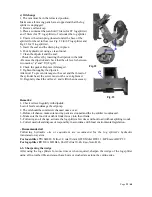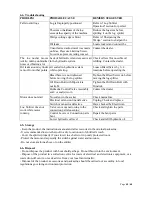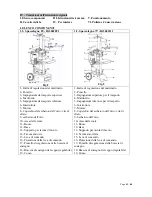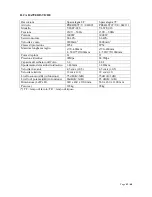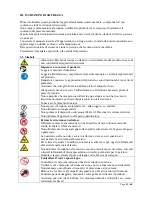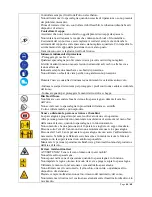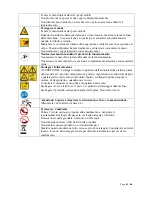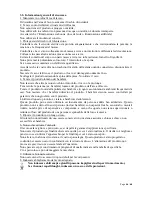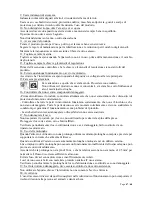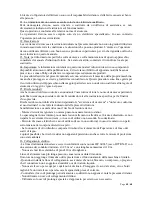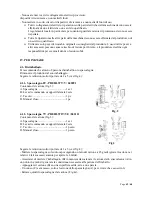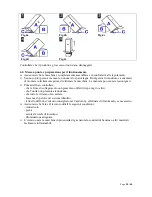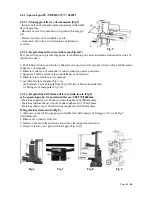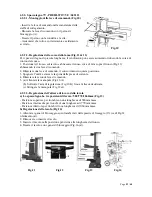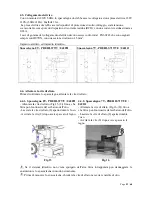
Page
38
/
60
Stack as you work. This will provide a safer work area, by keeping it uncluttered, and avoid the danger
of tripping, or damaging the power cord.
Accumulated split wood and wood chips can create a hazardous work environment. Never continue to
work in a cluttered work area which may cause you to slip, trip or fall.
Keep your work area clean and tidy.
VI. MAINTENANCE
Before any intervention on product, ensure that product is disconnected form its
power source.
Wear protective gloves to avoid any injury hazard.
Carefully observe the following points so as not to interfere with the proper operation of log
splitter: - Clean the machine thoroughly after each use.
- Eliminate resin residues.
- Regularly lubricate the piston rod by means of oil spray.
- Check the oil level, and refill as deemed necessary.
6.1- Freeing a jammed log
It may occur that the log remains jammed during splitting.
1. Switch off the machine and remove the plug from the socket.
2. Do not remove the jammed log with your hands!
3. Try to move the jammed log carefully using a crowbar to loosen it.
Do not damage the ram and splitting wedge.
- Never attempt to free the jammed log using a hammer.
- Never attempt to release the jammed log using a saw.
- Do not ask for help to a second person. Only one person should be around the machine.
6.2- Replacing the hydraulic oil
a) Checking the oil level
1. The ram must be in its collapsed position.
2. Remove the dipstick gauge (Fig.20).
3. Clean the dipstick and the gasket.
4. Insert the dipstick into the opening.
5. Remove the dipstick.
- When the oil level is between the two marks (Fig.21), the
tank contains enough oil.
- When the oil level is below the mark “a” (Fig.21), then it is
necessary to add oil with a clean funnel.
6. Check the seal. Replace if damaged.
7. Insert the dipstick into the hole and screw the cap back
on.
Fig.20
Fig.21
b) When to change the oil?
Do the first oil change after 25-30 hours; then drain every 50 hours or once a year.
19

